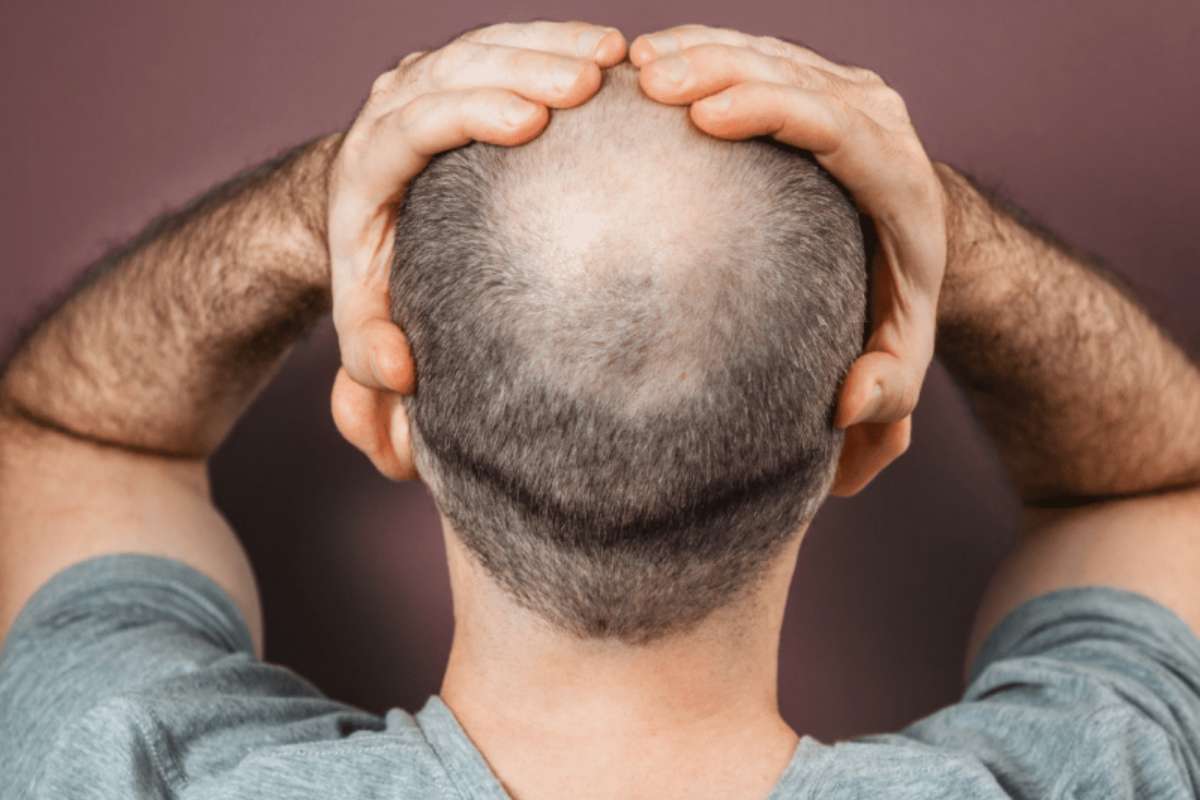Maybe you just got done after a long day of work. Or maybe you just finished a relaxing summer jog around the park. Either way, you finally pause for a second to take off your hat. Then, as you look inside, something horrifying comes into view—your hat’s seemingly FULL of your own hair.
This disturbing scene is incredibly common, especially as we begin to age. It’s also incredibly easy to see why so many men believe that wearing hats must cause, or at least speed up, balding. Why else would so many hairs end up inside your cap?
Hat guys of the world—you can relax. In the majority of cases, hats do not cause hair loss. Even in the rare event that it does, it’s usually reversible if caught in time.
So, where did this popular myth get started in the first place? In what situation can hats contribute to baldness? And how can you know that your hat isn’t playing a role in your own hair loss?
Why Do People Think Hats Cause Baldness?
In a sense, this entire myth occurs because of an illusion.
According to the American Academy of Dermatology (AAD), the average person sheds about 50–100 hairs every day. This happens whether or not you’re wearing a hat.
Without a hat, those daily stray strands naturally float away. Aside from a few hairs that stick to your shoulders or end up in a hairbrush or shower drain, you’ll likely never notice most of them.
Contrast this to a day where you’re wearing a hat. Instead of sailing into the wind, those hairs fully collect within your cap. Then when you take it off, you’re greeted with an entire day’s worth of ejected hairs which understandably causes serious distress.
If you were to notice this occurrence day after day, who wouldn’t start to attribute hats to speeding up the balding process? However—as you may have figured out by now—it has nothing to do with the hat at all. Instead, hats act like a basket by collecting an entire day’s worth of hair in one place.
Another situation leading to the misconception of the hat comes from the common practice of young men donning a hat to hide their receding hairline. The hat becomes a standard in your daily wardrobe to avoid unwanted teasing from friends about your thinning hair. However after a few years of this, male pattern baldness will natural progress. In reality, underneath the innocent hat, your hair has simply receded further in our determination to find blame.
Can seeing a small pile of hair accumulated in your hat be alarming, especially if you are seeing gradual increases baldness? Sure! But is it your hat’s fault? Almost always no.
Instead, it’s just a jarring—and often unwelcome sign—that hair loss is a reality.
When Can Hats Cause Balding?
Ok. So now you’re probably wondering, “What’s the caveat to that ‘almost always’ answer?” We figured you’d be asking that, and the answer is something called traction alopecia.
Though it’s more commonly seen in people that wear braids, weaves and tight ponytails or buns, hats can potentially cause balding because of traction alopecia. This only happens if you’re consistently—like all day, every day—wearing your hat extremely tight.
If your hat aggressively pulls on your hair and scalp, it can irritate the follicle and sometimes cause small, red bumps called folliculitis. Even if you don’t see any folliculitis, if this harsh pulling and irritation continues over a long period of time (like years), the follicles can fully scar over. This effectively kills the follicle and ability for those follicles to grow hair.
More often the tightness is centered on the back of the head where the strap lies. The same is true of a hard hat which has tight fitted straps inside the dome. In these cases, the constant rubbing over the occiput (boniest spot on the back of your head) can form a thin spot that over time could become permanently scarred.
Again, hats causing traction alopecia is exceedingly rare. However, if you believe it might be causing hair loss, it’s fully reversible if caught early. Just loosen your hat so it’s not pulling at your scalp, or take a break from wearing it altogether. As long as the follicles haven’t yet scarred shut, they’ll heal and new hairs will begin to grow.
So, now that we’ve confirmed that hair loss is rarely caused by hats—what is the likely culprit?
Why Am I Losing My Hair?
As you now know, though seeing more hair in your hat can be a serious hair loss wake-up call, it’s rarely the cause. Instead, you’re likely one of the 80 million men or 50 million women in the U.S. suffering from androgenic alopecia, otherwise known as male pattern baldness.
That means that rather than hats, you can mostly likely thank genetics—although stress, environmental factors or medical causes can sometimes cause hair loss as well.
In the simplest terms, androgenic alopecia is caused by the action of a hormone called dihydrotestosterone (DHT), the active form of testosterone. In androgen sensitive patients, DHT signals hair follicles to slow down growth producing hair that is not as before. Eventually, the androgens will cause affected follicles to stop producing hair altogether.
As the hair becomes weaker and shorter in those follicles, you’ll begin to notice your hairline thin and progressively crawl from the forehead to the back of the head. Just how thin and far back it goes is all up to your genes.
Thankfully, if this is the cause of your balding, modern medical advancements offer many effective solutions including medications, laser treatments, shampoos and hair transplants. They may not be able to change your genetic makeup, but they can slow down, stop or even reverse hair loss permanently.
Ready to find out exactly what’s causing your hair loss? Trust the professionals with years of high-quality care and amazing results. Our expert team at Limmer HTC can’t wait to answer every question and ensure you receive the full, lush hair you deserve. Call us today at (210) 496-9992 at or set up an appointment online anytime.







